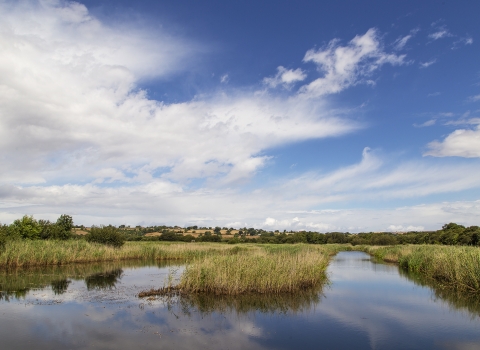Permit only
Burtle Moor
Know before you go
Dogs
Visit the 'Dog walking on reserves' page in the Contact section for more information.
When to visit
Opening times
Restricted access reserve due to winter visiting and summer breeding waders.Best time to visit
August to October only without a permit.About the reserve
Burtle Moor comprises three field compartments with nationally scarce, rush pasture, species rich mire type vegetation communities, containing Meadowsweet, Ragged Robin, Creeping Jenny, Lesser Spearwort and Marsh Marigold as well as Southern Marsh Orchid, Marsh Pennywort, Tubular Water-Dropwort, Skullcap, Common Meadow-rue and Marsh Stitchwort. A number of uncommon wetland plant species occur including Lesser Water Plantain, Water Violet and Arrowhead.
The reserve is particularly important for its bird interest, notably as a breeding and wintering ground for Snipe and as a wintering ground for Jack Snipe. Skylark also breed here. Other important wintering bird species including Lapwing, Teal and Gadwall. Peregrine, Hen Harrier, Water Rail, Stonechat and Whinchat have also been recorded here. Otter and Brown Hare occur regularly and Water Vole has been found occasionally along the ditches.
The ditches support significant invertebrate species including the Hairy Dragonfly, Ruddy Darter, Common Darter and Blue-Tailed damselfly. Common Blue butterflies also occur.
Reserve conservation management – The fields have been maintained by summer grazing and topping of rush for many years as permanent pasture. The aim is to maintain the wet pasture as a breeding and wintering ground for Snipe and wintering ground for Jack Snipe in conjunction with conserving the diversity of other species including rich grazing marsh flora and nationally notable dragonflies. Other aims are to maintain the ditch boundaries and monitor water levels in ditches.


